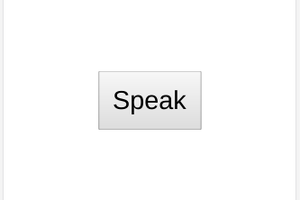http://www.youtube.com/watch?v=E_feC6NAiUA - We use google glass to control a servo arm that has a camera attached at the end. Google voice to spech, at&t text to voice, melodyne autotune used to convert human voice into GLaDOS voice. A nerf gun will be attached to the end of the arm is triggered by double winking. The camera stream is displayed on glass for control.
GLaDOS Glass
Google Glass becomes GLaDOs ---
http://www.youtube.com/watch?v=E_feC6NAiUA
 Eric Hahn
Eric Hahn






 Ross Bochnek
Ross Bochnek
 Victor Ribeiro
Victor Ribeiro
 digitalbird01
digitalbird01